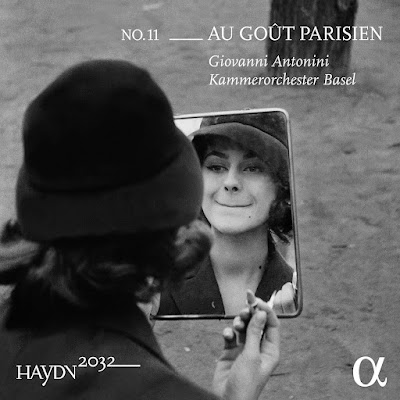Haydn: Symphonies 2, 24, 82, 87
Though the Basel orchestra is considerably larger than Il Giardino Armonico - the string complement is ten Violin I, seven Violin II, five Viola, three Double Bass - this is a nimble group that Antonioni takes through the twists and turns of Haydn's music as if he were driving a Ferrari. I've always loved the six Paris Symphonies commissioned by the Chevalier de Saint-Georges in 1788; two are included here. Number 82 is subtitled "L'Ours", for the comical, slightly grumpy features of its finale, complete with the drone of a folk instrument, perhaps a kind of bagpipe. Though it doesn't come with a cute title, Symphony 87 is a perfect mature Haydn symphony, an on-ramp for the Beethoven Symphony Freeway to come. The 24th Symphony is from 1764, a period when Haydn brought a bit of mystery and drama to the gallant symphonies of the time. It's bracketed by two stone-cold masterpieces - number 22, "The Philospher", and number 26, "Lamentatione" - but number 24 has its own positive qualities. I find it at once unsettling and exciting. There's something a little bit dangerous in this performance!
The Paris connection for Symphony 24 is that it was performed there - to great acclaim - in 1773. The 2nd Symphony, written in the late 1750s, was actually published in Paris in 1764. At under 10 minutes, it's the shortest of his symphonies, but there's plenty of incident packed in here. It's slight in stature, but not in style; the Little Symphony That Could.
Antonini brings great energy to all four symphonies here - great and small. Though this series doesn't replace my all-time choice for the complete Haydn symphonies, Adam Fischer's version on 37 CDs with the Austro-Hungarian Haydn Orchestra, I'm beginning to see that we now have a very close challenger, not quite a third of the way to 2032.
Each of the Haydn 2032 releases features a Magnum photographer in the album liner booklet, and this time it's the turn of the great Elliot Erwitt, a great choice considering the theme: "Au Goût Parisien". He took so many great photos of the City of Light; I'll post one here that he took in 1989; for some reason it isn't included in the booklet.



